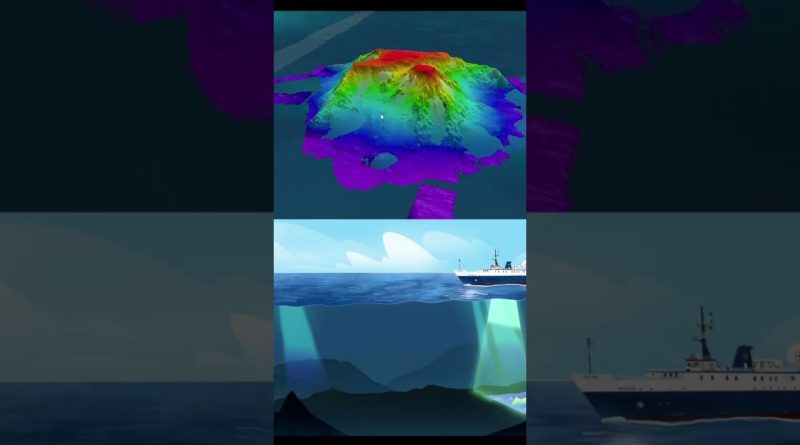Mapping with Multibeam Sonar | Nautilus Live
Mapping the ocean floor aboard E/V Nautilus relies on our advanced Kongsberg EM302 Multibeam Echo Sounder – a tool that uses acoustic sound to “see” beneath the waves at the hidden features of the planet. This system emits sound in a fan-like pattern made of up to 864 individual sonar beams, covering a wide expanse beneath and either side of the ship. Operating at 30 kHz frequency, the system provides high-resolution bathymetric data down to 7,000 m, enabling precise mapping of the seafloor as Nautilus travels around the world. By precisely measuring the time it takes for sound to make a roundtrip journey from the ship to the seafloor and back, the system creates detailed 3D maps, aiding scientists and technical teams in their exploration of the ocean’s hidden landscapes.
—
E/V Nautilus is exploring unknown regions of the ocean seeking out new discoveries in biology, geology, and archaeology. Join us 24/7 for live video from the seafloor and to ask questions of our explorers currently aboard Nautilus: https://www.nautiluslive.org.
Follow us on social media for dive updates, expedition highlights, and more:
Subscribe on YouTube: https://www.youtube.com/subscription_center?add_user=EVNautilus
Facebook: https://www.facebook.com/nautiluslive
Twitter: https://www.twitter.com/evnautilus
Instagram: https://www.instagram.com/nautiluslive
TikTok: @NautilusLive
atoll logiciel




Is the water too dense below 7,000m for the beams to work effectively?
doesn't this injure whales?
You ever think about how dolphins talk in 3 dimensions
Sonar is so cool
Question for EV Nautilus: How does the 30 kHz frequency interact with the ocean’s biotas?
I always wondered if this sonar can "see" the fish… 🤔
There is no end to the awesome stuff you guys are doing.😮
I wish i had worked in an area like this. 😊
we know animals can hear up to 100khz freq.. cats can hear up to 64khz, what dB are they using i wonder?
Cool beams!